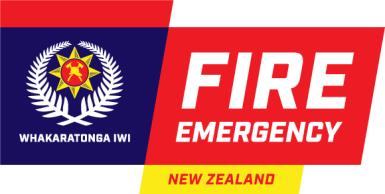
 He pepa a te Poari / Board Paper
Ki a / To:
He pepa a te Poari / Board Paper
Ki a / To:
Chair and Board members
Nā wai / From:
Kerry Gregory, Chief Executive
Te Rā / Date:
31 March 2023
Kaupapa / Subject: Establishment of remaining Local Advisory Committees
Kaupapa / Purpose
This paper is requesting the Board to discuss next steps in relation to the remaining nine Local
Advisory Committees (LACs) and provide advice and recommendations on the way forward.
Ngā Tūtohunga / Recommendations
That the Board:
1.
notes the Fire and Emergency Act 2017 requires the Board to establish LAC’s across Aotearoa
2.
notes the requirement for public consultation should the Board wish to change LAC boundaries
3.
notes the four next steps options proposed with associated advantages and disadvantages
4.
approves option one: to Standup the remaining nine LACs based on existing boundaries by
December 2024.
Te Horopaki / Background
The Fire and Emergency New Zealand Act 2017 requires the Board to establish LACs across Aotearoa.
The statutory role of LACs is to undertake local engagement on behalf of the Board, to provide local
advice on national strategy, local issues and local planning, to consider and promote the interests of our
volunteers, to consider the interests of local industry brigades and the provisions of Memorandums of
Understanding (MoUs) and Operational Service Agreements (OSAs) in their local area, and to provide
regular advice on progress on local planning.
under the Offical Information Act 1982
The appointment of members to an LAC is governed by regulations and the Evaluation and
Appointments Committee, established by the Board, to oversee the appointments process, shortlisting
and recommendations for appointment.
The Board established 16 LAC boundaries in 2019 and appointed members to the first seven LACs in
2020.
Released
IN CONFIDENCE

A Year one evaluation was completed in January 2022. The evaluation found that the LACs are
generally well designed to meet their legislative function, were working as intended in their
establishment phase and were well supported at a district and national level.
In May 2022, it was decided to wait until the new region and district leadership had been in place for at
least a year before making further decisions about establishing the remaining LACs. The new region and
district leadership team structure was established in September 2021.
Tātaritanga/Analysis
After public consultation in 2019, 16 LAC boundaries were adopted that align with Civil Defence
Emergency Management (CDEM) boundaries, except for the inclusion of the Tararua District in the
Hawke’s Bay LAC local area.
When considering the establishment of the remaining LACs, we reviewed the role of LACs within the
wider emergency management sector to assess whether LACs would create duplication of services or
add pressure or risk to communities, including iwi. The role of LACs is to provide advice to Fire and
Emergency from a community perspective and strengthen our engagement with communities.
Coordination of planning across government and non-government agencies is the role of CDEM
groups.
Sector advisory group functions are varied and focus on providing specialist advice. We have not seen
evidence of duplication of services or added pressure on the community during the time that the first
seven LACs have been in operation.
In determining the options for next steps for the remaining LACs we established a reference group of
functional leaders and consulted with Service Delivery Leadership Team and ELT.
When reviewing options for the remaining LACs, current boundaries, regulatory settings, opportunities
to rationalise the number of LACs where taken into consideration, along with maintaining the status
quo and not establishing any further LACs.
Options
There are four options for the Board to consider:
Option one: Standing-up the remaining nine LACs based on existing boundaries by December 2024
There is merit in retaining boundaries that align with CDEM boundaries. The boundaries were set in
under the Offical Information Act 1982
2019, following a public consultation process. The additional effort required to make changes to the
boundaries including public consultation could potentially outweigh the benefits.
The advantage of using CDEM Group boundaries as LAC boundaries is, they are relatively stable and
well understood by the public as they are based on regional council boundaries.
Released
IN CONFIDENCE
 Option two: Stagger the stand-up of the remaining nine LACs based on existing boundaries over the
Option two: Stagger the stand-up of the remaining nine LACs based on existing boundaries over the
next three years.
Staggering the roll out of the remaining nine LACs would result in spreading out costs (of establishing
and supporting the remaining LACs) over three financial years. LAC boundaries would remain the
same and there will be no requirement for consultation.
There is potential reputational risk involved with this option as there has already been political and
media interest in the delay establishing the remaining nine LACs. This option could create the
perception to both existing LAC members and the public that Fire and Emergency does not value
community input.
Option three: Changes to LAC boundaries
There are opportunities to review the set-up of LACs within the legislative and regulatory settings. The
Board could consider reviewing the LAC boundaries with a view to rationalising the number of LACs,
taking a more targeted approach to the composition of the appointment of LAC members, and reviewing
the LAC Terms of Reference.
Section 16(2) of the Fire and Emergency NZ Act 2017 (the Act) requires the Board to consult with the
public on the boundaries for LACs. When setting boundaries, the Board is required to consider the size
of the local area. Implementing larger LAC boundaries could be considered alongside a more targeted
approach to representation on committees. The regulations specify the minimum number of members
for an LAC (five) and the Board has latitude to determine the number of LAC members on a committee
and the sector or geographical area they represent. This could ensure there are sufficient members to
be able to provide a local voice and/or represent specific communities or sectors such as iwi.
The Act also requires the Board to set operating principles to guide the way LACs operate. These
currently sit within the LACs Terms of Reference. There is an opportunity to update the LAC Operating
Principles to support the operation of larger committees balancing the need to ensure the local intent
of the legislation is retained.
Option four: Status quo - continue with existing seven LACs
This option refers to retaining the current seven LACs and not establishing the remaining nine LACs. This
would mean establishing only seven LACs out of the 16 LAC boundaries approved by the Board. This
approach would not be complaint with the legislation as the Act requires the Board to establish LACs
across Aotearoa.
The current seven LACs are predominantly in rural locations and cover a small percentage of Aotearoa’s
under the Offical Information Act 1982
population, limiting the opportunity to get insights into diverse urban and built environment
populations.
There is significant reputational risk with this option. Fire and Emergency may be seen to not place value
on community input into planning and engagement. Media and political interest may continue. There is
Released
IN CONFIDENCE

a risk of attracting and retaining members on the current seven LACs, as members may perceive that
the remaining LACs are not being established because their role is not valued.
We would lose the opportunity to have LAC input into local planning across all our districts.
Options Analysis
Option
Advantages
Disadvantages
1
Stand up remaining
• Preferred option of ELT
• Ongoing costs for Fire and
LACs based on
• Likely to be the most
Emergency to support 16
existing boundaries
effective option to reduce
LACs
within 12 months
reputational risk
• LAC
boundaries remain as
they are
• No further work or
consultation required
• Complete this rollout in 12
months (in three tranches)
• Able to establish new LACs
as soon as practicable
2
Stand-up remaining
• Potential to spread out the
• Reputational risk regarding
LACs based on
financial costs over three
delay
existing 16
financial years
• Current LAC members may
boundaries from
• LAC
boundaries remain as
not feel valued
2024-26 (3 per year)
they are
•
No further work or
consultation required
3
Review boundaries
• This option could mean
• Public consultation will be
standing up less LACs (for
required to change
example taking regional
boundaries:
approach)
• This will create additional
• Creating a larger ‘local area’
costs and delay
could provide an
• Retaining the ‘local’ voice of
opportunity to create a
LACs
targeted membership
• Ensuring that local risks are
approach to ensure
accounted for
representation (e.g.
apportion membership
under the Offical Information Act 1982
numbers by district and by
key stakeholders e.g.
iwi/forestry)
• Amending the Terms of
Reference and Operating
Principles can
Released
IN CONFIDENCE

incorporate/reflect these
changes
4
Status quo -
• Cost-effective option, no
• Fire and Emergency isn’t
continue with
requirement for Fire and
meeting legislative
existing seven LACs
Emergency to support an
requirements
additional nine LACs
• Perception Fire and
Emergency doesn’t value
community input into
planning and engagement
• Would require evidence that
they are not operating as
intended or not adding value
• Current LAC members may
feel that they are not
valued/not a priority
Preferred option
ELTs preferred option is option one so that we can establish the remaining nice LACs as soon as
practical, comply with legislation and realise the intended benefits of LACs.
More detail on why this is the preferred option, including the proposed sequencing and timelines is
provided in Appendix one.
Ngā tūraru / Associated risks
Delaying or not establishing the remaining LACs until a later date may create a reputational risk. Media
and political interest in late 2022 and early 2023 regarding the deferral in establishing the remaining
LACs may continue. Current LAC members may not feel valued if there are further delays to
establishing the remaining LACs. Communicating decisions regarding the establishment of the
remaining LACs may mitigate these risks.
Ngā hua ka puta mai ki Te Tari / Implications to the business
Establishing the remaining LACs will ensure Fire and Emergency is compliant with the legislation and
will enable the benefits from LACs to be realised across all districts.
under the Offical Information Act 1982
Hīraunga a-Pūtea / Financial Implications
The financial implications are dependent on-Board decisions. If the Board decides to progress with
establishing the remaining LACs the estimated cost is $725,000. This includes initial development,
Released
IN CONFIDENCE



recruitment, appointment and establishment processes and will be funded via Portfolio and
Investment as a priority initiative.
Estimated additional BAU funding will be required if we stand up the remaining LACS. It is expected
additional funding of approximately $268,000 per annum will be required to support the additional
nine LACs.
Kerry Gregory
Ali Carmel
Tumu Whakarae Tuarua-Deputy Chief Executive
Tumu Whakarae - Chief Executive
Office of the Chief Executive
under the Offical Information Act 1982
Released
IN CONFIDENCE
 Appendix one: Preferred option - stand up remaining LACs based on existing
Appendix one: Preferred option - stand up remaining LACs based on existing
boundaries within 12 months
In determining the preferred options for the proposed rollout of the remaining LACs, consideration
was given to establishing the remaining LACs in tranches, combining a mix of metropolitan and
provincial locations in each tranche and internal capacity to support the roll out of additional LACs.
Consultation was undertaken with, District, Region, NHQ functional leaders and the Service Delivery
Leadership Team, along with ELT, on the roll out plan. All are supportive of the proposed sequencing
and timeframes for the establishment of the remaining LACs.
It is proposed to roll out the remaining LACs in three tranches (with some overlap in activity within
tranches), with one tranche specifically devoted to establishing the Auckland LAC, a committee which
will represent 1.7 million people and provide insights across three Fire and Emergency districts
(Auckland City, Counties Manukau and Waitemata). In option 1 the rollout would commence in
January 2024 and complete by December 2024.
The Auckland LAC model poses unique requirements. Work to develop an approach that balances the
need for a diverse population of 1.7 million and a focus on local areas risks, priorities and engagement
gaps is progressing well. This has been supported by the Te Hiku Region Leadership team. Lessons to
be identified from the establishment of an Auckland LAC will inform the setup of the Wellington and
Canterbury LACs which also include a mix of metropolitan and rural areas within their boundaries.
Table 1: Proposed sequencing to establish the remaining LACs
Tranche one
Tranche two
Tranche three
Southland
Auckland
Wellington
Taranaki
Bay of Plenty
Waikato
Whanganui/Manawatu
Nelson Tasman
Canterbury
Establishing an LAC from end-to end takes approximately five months. Lessons learnt from previous
appointment rounds will be taken in to account and will inform our approach. It is expected that the
establishment of an Auckland LAC may require additional engagement and communications activity to
ensure we are reaching across a broad range of stakeholders and communities of interest therefore
we have allowed additional time for this tranche. Launching the remaining nine LACs is expected to
under the Offical Information Act 1982
take approximately 12 months.
Released
IN CONFIDENCE

More detail on the five key phases to set up an LAC is provided in the table below.
Table 2: LAC establishment phases
Phase
Actions
Timeframe
Initiation/analysis
• Determining the optimum membership 4-6 weeks
for each LAC based on local risks,
communities of interest and district
priorities
• Project and communications planning
Nominations
• Open, receive and close nominations
4 weeks
• Regulations require a public
nominations process
Evaluation of nominees
• Shortlisting
4 weeks
• Interviewing
• Candidate vetting
Appointment
• Evaluation and Appointments
4 weeks
Committee recommendations
• Board Approval
• Notifications
• Onboarding of appointees
Induction
• Virtual whakatau
4 weeks
• Online modules
• Kanohi ki te kanohi workshop
under the Offical Information Act 1982
Released
IN CONFIDENCE










